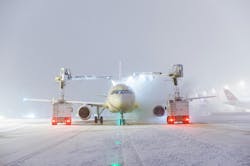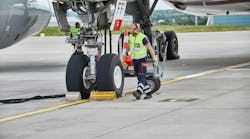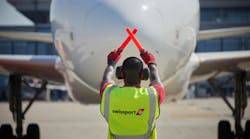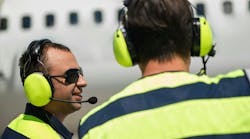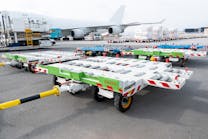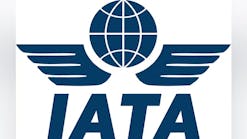How EASA’s Proposed Ground Handling Regulations Complement Industry Standards
In January 2024, the European Union Aviation Safety Agency (EASA) published the first-ever proposal to regulate ground handling across European Union (EU) airports.
The EU ground handling regulations are expected to be published in late 2024 or early 2025 with a transition period proposed by EASA of three years for implementation after the publication of the regulations.
In addition to EASA’s proposal, other international standards like the International Air Transport Association (IATA) Safety Audit for Ground Operations (ISAGO), IATA Ground Operations Manual (IGOM) and Airport Handling Manual (AHM) will continue to have a place in the context of ground handling as a safety-regulated industry.
According to Monika Mejstrikova, director of ground operations at IATA, the upcoming EASA regulation recognizes that ground handling service providers (GHSP) may use their own operational procedures or industry standards, if they meet certain criteria such as that they are developed by subject matter experts (SME), they are within the scope of the regulation, they are based on experience in the field, and include process for continuous improvement.
“Industry standards, like AHM and IGOM, are very relevant in this entire process because they meet those criteria and, therefore, when implemented the GHSP shall comply to all what the regulation is asking for,” she says.
The Airport Services Association (ASA) and Airports Council International (ACI) have worked closely with IATA to ensure that the IGOM is developed collaboratively to support all aviation players, and this should help establish the IGOM as an acceptable industry standard, say officials at Swissport.
EASA believes that the ground handling regulations should align as much as possible with the existing standards in ground handling, as this approach facilitates the future implementation of the requirements and recognizes the value of such standards.
“Among those standards are the ICAO Ground Handling Manual (Doc 10121), the IGOM, IATA’s AHM, the SAE standards on deicing/anti-icing, the International Business Aviation Council’s (IBAC) International Standard for Business Aircraft Handling (IS-BAH) for general aviation and the Joint Inspection Group (JIG) standards on fueling operations,” EASA officials say.
“The requirement related to the structure of the ground handling manual is aligned as much as possible with the IGOM and the AHM,” they add.
The new approach proposed by EASA towards the use of industry standards to comply with the ground handling regulations mostly addresses the operational requirements.
“So, a new implementing rule (ARGH.OVS.310) in the authority requirements is proposed to establish the legal ground for EASA and the competent authorities to work together in a process to validate (i.e., accept) the use of those industry standards that meet certain quality criteria (detailed in the rule) and demonstrate compliance with the ground handling regulation,” say EASA officials. “Through this process, EASA ensures that the content of those industry standards is being evaluated on a regular basis in a common process involving the member states, and the result of this assessment is valid for all the EASA member states applying the EU rules on ground handling.”
Certain industry standards are already recognized by an official standardization body, such as the EN standards for the design and operation of ground support equipment (GSE), and they are published in the official journal, observes representatives at EASA.
“For such recognized industry standards, the process of evaluation should be minimum and may only consist in checking that those standards address the scope of the implementing rules. The process of recognizing the added value of adopting and applying industry standards, when this simplifies and harmonizes the way in which ‘things are being done safely,’ should come from industry itself. So, the industry standards will not become mandatory through the ground handling regulations, the adoption of standards remains a voluntary decision for each organization,” say officials at EASA.
“Ground handling organizations, aircraft operators, aerodrome operators that apply industry standards today may continue to do so in the future,” they continue. “Likewise, organizations that use their own operational procedures may continue to apply them with the future ground handling regulation. This approach allows for the necessary flexibility in compliance with the implementing rules.”
EASA considers ISAGO as an audit program based on the IATA industry standards and good practices rather than an industry standard itself.
“The proposed EU ground handling regulations contain no requirements on ISAGO, each competent authority of the EASA states may decide to what extent it intends to rely in its oversight program on the results of industry audits such as ISAGO,” EASA officials explain. “The regulations need to ensure a balanced approach towards the industry audit programs and industry standards, as one size does not fit all; for instance, the equivalent of ISAGO in the business world is the IS-BAH program developed by IBAC.”
In relation to ISAGO, Mejstrikova observes that the labor shortage is a real phenomenon in all aspects of today's world.
“Aviation or ground handling or national aviation authorities (NAA) are not any exception. It is important that more and more EU-based NAAs use the ISAGO audit reports as complementary to their own state oversight,” she says. “It is currently difficult to find a good, experienced and knowledgeable auditor or inspector who has recent ground handling experience, knows how to consistently apply audit methods, and understands ground operations inside out,” she says. “We have some of those qualified under the IATA Charter of Professional auditors and think that results of their work will benefit others and with a collaborative approach, recognizing ISAGO, we all will succeed.”
Read more on EASA Ground Handling Regulations
EASA’s Proposal to Regulate Ground Handling
How Ground Handlers Can Comply with Proposed EASA Regulations
How Proposed EU Handling Regulations Will Impact Airports and Operators
